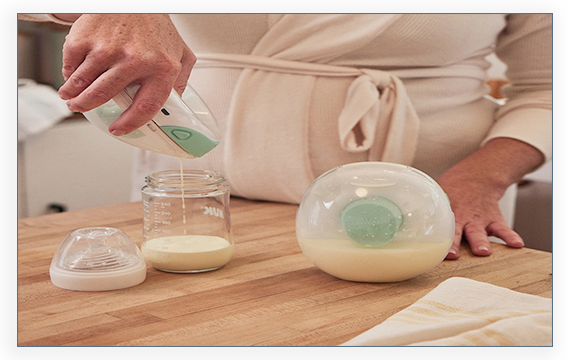Baby Hunger and Fullness Cues
Even before your child can talk, he or she will show signs of hunger or fullness by using sounds and movements.

Hunger cues: Birth – 6 months
From birth to 6 months old, your infant will progress through a series of signs showing that he/she is hungry. The typical progression is:
1. Begin smacking lips, clucking tongue, and opening closing his/her mouth in a sucking motion (even during sleep).
2. Rooting, turning his/her head toward caregiver, and opening/closing mouth in a sucking motion.
3. Bringing hands to mouth.
4. Clenching hands into fists and increase sucking on hands.
5. Beginning to show lines of stress in his/her face.
6. Beginning to cry.
It is important to note that crying is often a late sign of hunger. Look for signs 1-5 first to better anticipate your baby’s needs and begin feeding when he/she is still calm.
Fullness cues: Birth – 6 months
As your baby becomes full, you will notice the following signs:
1. The lines in baby’s face will begin to smooth out.
2. Hands that were tightly fisted and up near the cheeks will begin to slowly open. Arms will relax and drop to the sides.
3. Baby will no longer maintain a tight seal at breast or on the bottle, and milk will begin to leak at the corners of the mouth.
4. Baby will turn away from the feeding and refuse to re-latch onto your breast or the bottle.
It is important to note that if your baby has fallen asleep but still exhibits lines on the face or fisted hands, he/she is not yet full and will wake up shortly to re-feed. Take time to burp your baby, change his/her diaper and gently arouse him/her to complete the feeding.
Have more questions? Listen to our FREE podcast!
LISTEN NOWHunger cues: 6 – 24 months
1. Reaches for or points to food.
2. Opens his/her mouth when offered a spoon or food.
3. Gets excited when he/she sees food.
4. Uses hand motions or sound during feeding to let you know he/she is still hungry.
Fullness cues: 6 – 24 months
1. Pushes food away.
2. Closes his/her mouth when food is offered.
3. Turns his/her head away from food.
4. Begins to play with food.
It is important to listen to these hunger and fullness cues, and to let your child decide how much he/she wants to eat. If you are concerned about how much or how little your child is eating, speak to your pediatrician.
The information contained here within is not intended to be a substitute for professional medical advice, diagnosis, or treatment. Always seek the advice of your physician or other qualified health provider with any questions you may have regarding a medical condition. Never disregard professional medical advice or delay in seeking it because of something you have read. If you think you may have a medical emergency, call your doctor, go to the emergency department, or call 911 immediately. Edwards Health Care Services (EHCS) does not recommend or endorse any specific tests, physicians, products, procedures, opinions, or other information that may be mentioned here within. Reliance on any information provided by EHCS, EHCS employees, contracted writers, or medical professionals presenting content for publication here within is solely at your own risk.
Tags: Baby, Breastfeeding, Cues, Eating, Fullness, Hunger, Infant, Mom, Newborn




